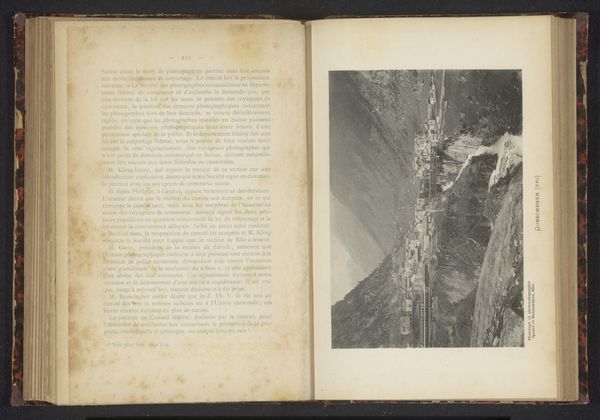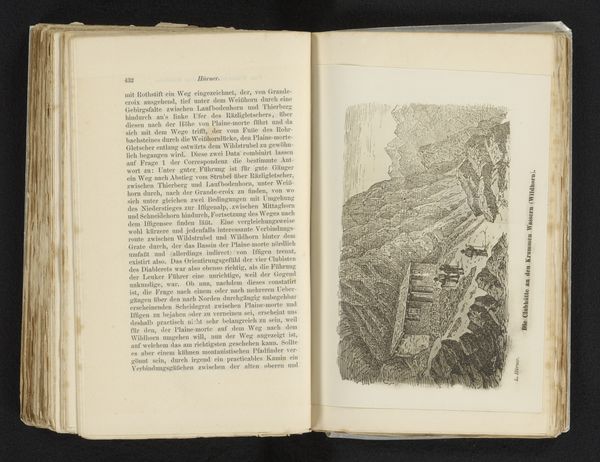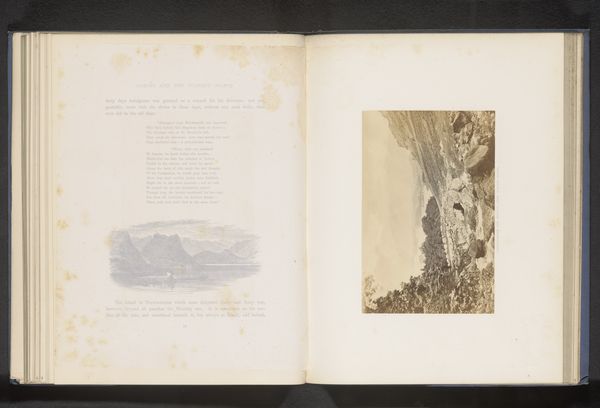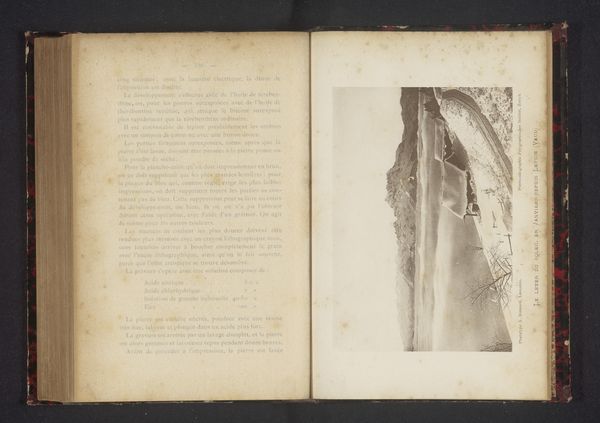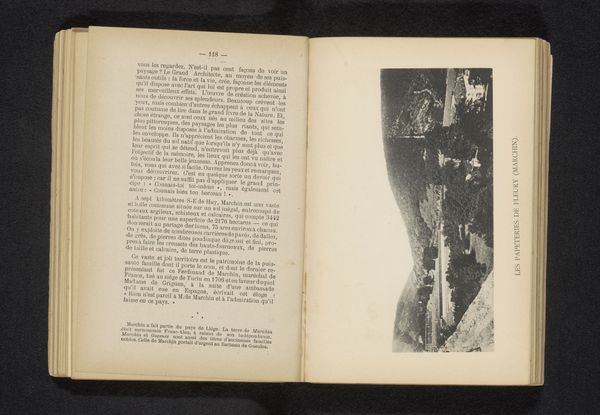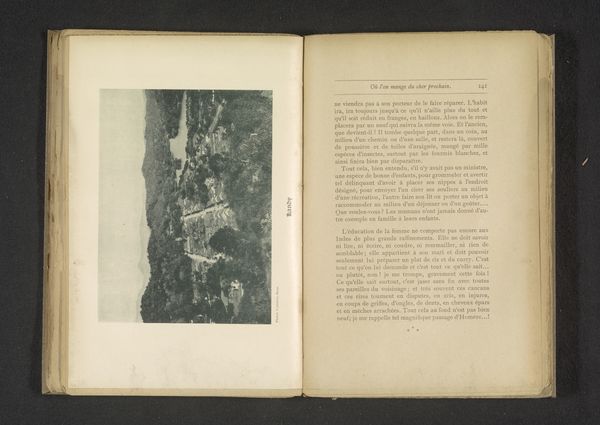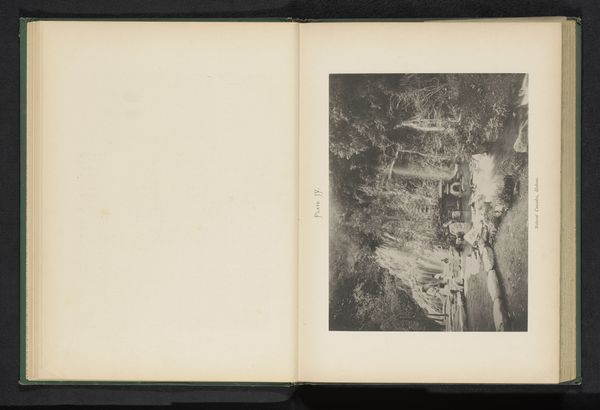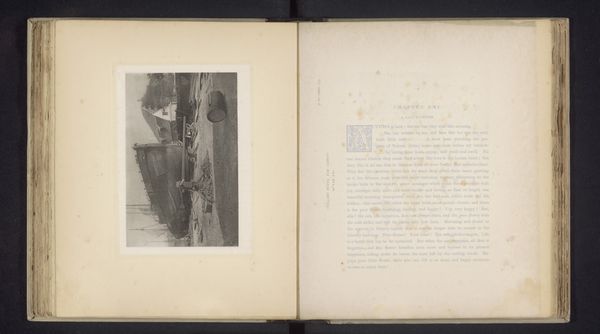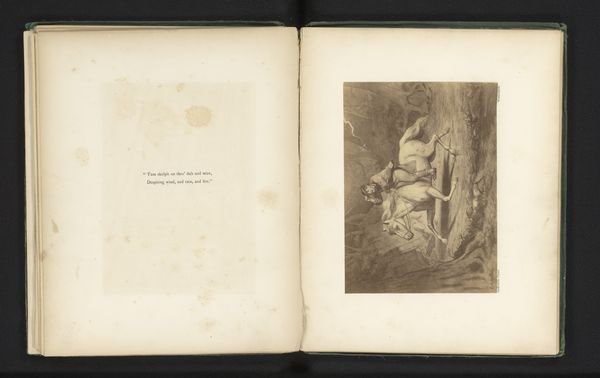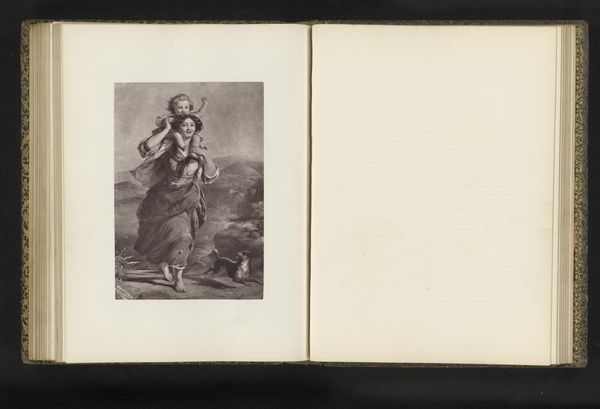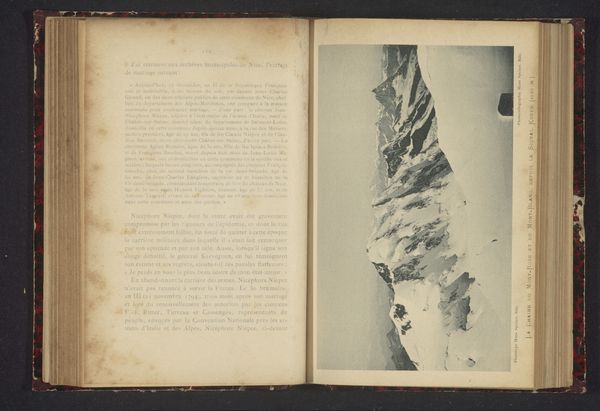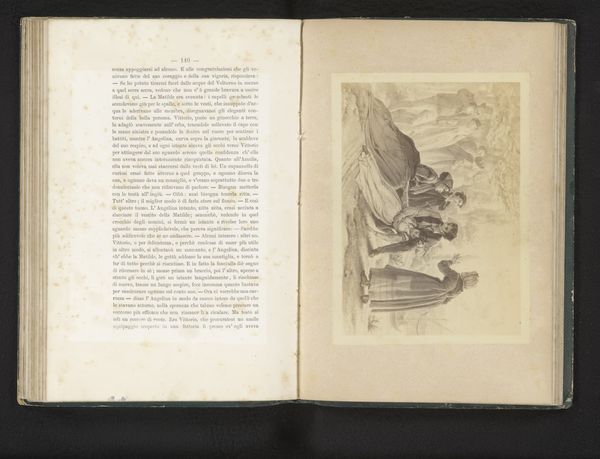
print, paper, photography, gelatin-silver-print
#
still-life-photography
#
pictorialism
# print
#
landscape
#
paper
#
photography
#
coloured pencil
#
gelatin-silver-print
#
watercolor
Dimensions: height 125 mm, width 175 mm
Copyright: Rijks Museum: Open Domain
Curator: Before us, we have a gelatin silver print titled "Gezicht op vier blokhutten in Zinal, Zwitserland," attributed to P. Odier, created before 1899. It is currently presented as an open book. Editor: It strikes me as starkly contrasted and somber, even considering the photographic processes available at the time. There's an undeniable austerity in the composition, a sense of isolated existence perhaps. Curator: Note the way Odier has manipulated light and shadow. The texture of the wood in the blockhouses is incredibly pronounced, the play of light articulating form and depth while simultaneously obscuring the windows. We might read this in connection to Pictorialism, where the photograph mimics painterly effects. Editor: Precisely, and that Pictorialist lens opens avenues to thinking about whose vision is centered here. These aren't just rustic dwellings; they represent a particular social strata, and how are we positioned as viewers? Consider also, photography as a method of documenting "otherness" at the turn of the century. How does that impulse to record connect to imperial projects of cataloging cultures? Curator: An insightful point. Thinking structurally, observe how the mountainside's upward thrust leads the eye, culminating in the uppermost blockhouse. There's a subtle tension between the verticality of the landscape and the horizontal arrangement of the structures themselves. This tension gives the photograph a certain visual dynamism. Editor: And yet that dynamic seems fixed. The cabins, weathered by time and climate, feel inseparable from the mountainside itself. This reinforces the precarity of mountain life, their struggle against the elements mirroring societal power structures pressing down on the working classes. We are not merely observing landscape but a way of life, deeply implicated in power and place. Curator: Your contextual interpretation reveals nuances that my purely formal reading might have missed. Perhaps these visual contrasts, beyond mere aesthetics, are emblematic of the wider socio-economic disparities inherent in that time. Editor: It demonstrates how the past is never just the past. These structures resonate even today as testament to those enduring challenges of existence in geographically remote and politically marginalized communities.
Comments
No comments
Be the first to comment and join the conversation on the ultimate creative platform.
